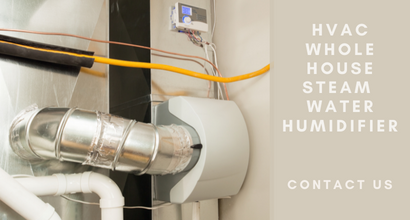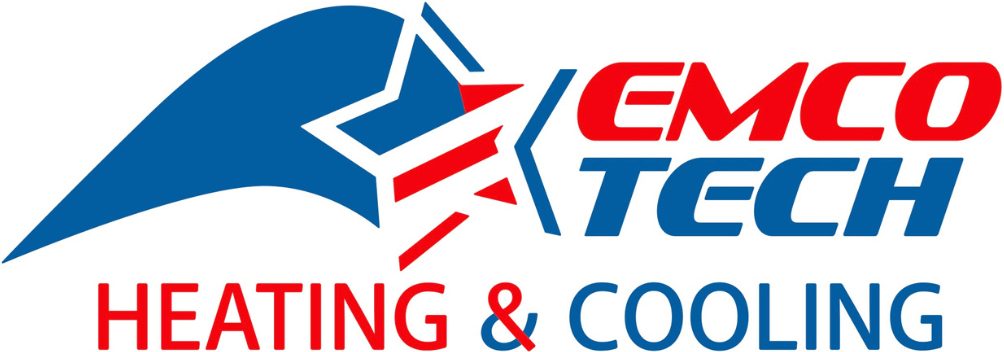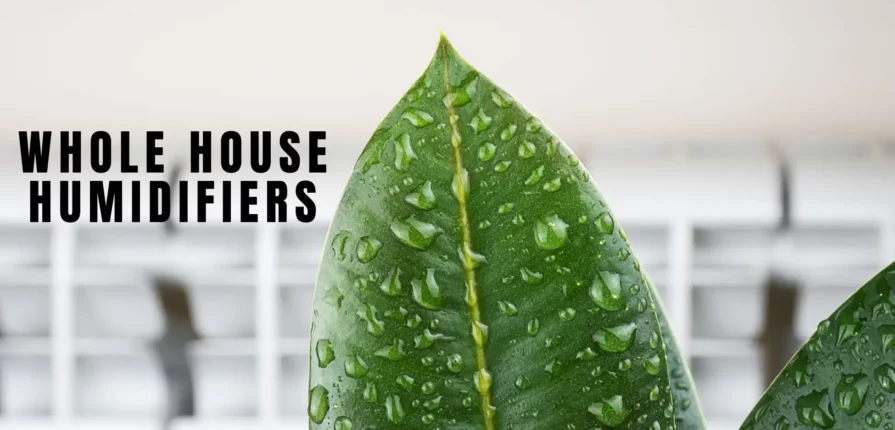Let’s look into the advantages of using a whole house steam humidifier or a bypass water humidifier: Dry air can cause significant discomfort and health issues, especially during the cold winter months when heating system is running. You may feel your skin getting dry and itchy, your nasal passages irritated, and your floors creaking. These are some of the common signs of low indoor humidity that should not be ignored. A steam humidifier can help maintain the balance of moisture throughout your home, reducing the risk of illnesses from bacteria and mold spores that thrive in dry environments. Similarly, a bypass humidifier effectively addresses dry air, making you less sensitive to dust mite and mold allergens. These allergens can trigger eye and nose irritation, coughing, and asthma-like symptoms. To avoid these problems and improve the quality or indoor air, it is essential to maintain adequate humidity levels.
Understanding Whole House Steam and Water Humidifiers
Dry indoor air or low indoor humidity may cause dry skin, creaking floors, respiratory infections, or the flu.
As David Rosenberg, MD, a pulmonologist, notes, “Not only does breathing air below recommended relative humidity levels irritate respiratory passages but doing so contributes to a heightened risk of contracting COVID-19 and influenza”.
Have you ever wondered why it’s easier to breathe near a lake or ocean? Moist air soothes irritated airways.
Consider Purchasing a Whole-House Humidifier
Installing a humidifier is one of the best ways to ensure healthy lungs and skin during winter. One of the best solutions to combat dry air is to install a humidifier in your HVAC system. A humidifier adds moisture to the air as it circulates through your ductwork, creating a more comfortable and healthy indoor environment.

Unlike portable humidifiers that need constant refilling with tap water, a central humidifier connects to your plumbing system. Moreover, it automatically adjusts the humidity level according to your preference. Central humidifiers come in various models, sizes, and installation styles, which impact costs. Nevertheless, the use of a humidifier is similar to all models. A central air humidifier is integrated into a forced-air heating system to humidify air as its heated. Unlike portable humidifiers requiring refills, a central humidifier receives water automatically from household plumbing.
Find HVAC Contractors for Efficient Whole-House Humidifiers Installation
At EMCO Tech Heating & Cooling, we are experts in installing and maintaining central humidifiers for homes and offices locally. We can help you choose the right type and size of humidifier for your space and budget. Contact us today to find out more about our services and products. Please contact us today if you’re interested in learning more about our central humidifiers.
Types of humidification equipment:
There are two main types of central humidifiers: steam humidifiers and flow-through humidifiers (also known as evaporative humidifiers). Both types of humidifiers can help alleviate dry air symptoms and improve indoor air quality during winter months. Additionally, they have some differences in how they work and what they require.
Steam Based Models
A Steam humidifier uses electricity to boil water and create steam, which is then injected into the air stream of your HVAC system. Steam humidifiers are very effective and can produce a lot of humidity in a short time. They also do not depend on the operation of your furnace, so they can work all year round. However, steam humidifiers are more expensive to buy and install, and they consume more energy than other types of humidifiers. They also require regular cleaning and maintenance to prevent mineral buildup and bacterial growth.
Bypass Water Based Models
Flow-through humidifiers use water from your plumbing system to moisten a pad or filter, which is then exposed to the warm air from your furnace. The air evaporates some of the water from the pad or filter, increasing the humidity level. Flow-through humidifiers are cheaper and easier to install than steam humidifiers, and they use less energy. They also do not have a water reservoir that can harbor dust mites or mold, making them more hygienic. However, flow-through humidifiers only work when your furnace is running, so they may not provide enough humidity during mild weather. They also waste some water that drains out of the system after each cycle.
And read below to learn more about the two most common humidifier types in the average home or office: the steam humidifier and the flow-through humidifier (evaporative humidifier).
Steam Humidifiers
Whether you’re battling dryness in your home or office or want to create a comfortable environment, the steam humidifier can help you achieve humid indoor air.
A steam humidifier uses an internal humidistat to detect moisture in the air. When moisture levels drop, the humidifier heats water in a reservoir, converting it to steam. Your furnace slowly disperses the steam throughout your home. Humidity begins to increase to a noticeable degree.
A steam humidifier designed for HVAC applications is a user-friendly device that is ideal for adding humidity to your ventilation system. The device uses an electric current to heat the water, bringing it to the boiling point and producing a warm and steamy mist that keeps your home or office well-hydrated, especially during long and dry winters.
Whole house steam humidifier incorporates a built-in timer feature that can be programmed to operate as per requirement. It also boasts of a capacious tank, requiring infrequent refills, and offers superior humidity control, compared to other models. Steam-based humidifiers present a low risk of mold, ensure efficient energy usage, and entail minimal maintenance costs, thereby rendering it a cost-effective option.
Although furnace heat is required for a steam humidifier, humid air feels warmer, so you may feel more comfortable at lower temperatures when the humidifier operates.
You can browse steam humidifiers we offer here: Carrier Humidifiers.
Water Humidifiers (Flow Through Bypass Humidifiers)
A flow-through humidifier uses an evaporator pad and warm air to humidify the air. The humidifier is mounted onto a furnace and requires fresh water to flow through the system. The water gradually drains away. A steam humidifier offers many advantages, but some may prefer the benefits of a flow-through model:
- Flow-through humidifiers are reliable and rarely fail
- The absence of a central reservoir is potentially more hygienic than steam humidifiers
- Flow-through humidifiers usually consume less electricity than steam humidifiers
A flow-through humidifier is often the best choice for most customers, depending on your home’s size and heating needs.
You can browse water humidifiers we offer here: Carrier Humidifiers.
EMCO Tech Introduces the Carrier Steam Humidifier
EMCO Tech Heating and Cooling proudly offers Carrier’s innovative electrode steam humidifier, enhancing indoor air quality through your HVAC system. This advanced unit replaces traditional heating elements with electrodes, efficiently generating steam to maintain optimal humidity. Its unique dispersion tube ensures even steam distribution and condensation management. The system is easy to maintain with a replaceable canister, eliminating cleaning needs. It’s versatile, supporting various voltages and installation options, and works well in different water conditions without requiring filtration.
Key Features:
- Efficient electrode steam generation
- Easy maintenance with replaceable canister
- Flexible installation and voltage compatibility
- Advanced steam dispersion technology
- Comprehensive accessory kit included
Upgrade your indoor air comfort with EMCO Tech Heating and Cooling Carrier electrode steam humidifier.
Upgrade Your Home’s Air with the Innovative Carrier Bypass Water Humidifier
Discover the unparalleled comfort and efficiency of Carrier Large Bypass Humidifier, proudly offered by EMCO Tech Heating and Cooling. This advanced humidification system promises not just to enhance the quality of the air you breathe but also to elevate your overall home living experience. Enjoy the myriad benefits of perfectly balanced humidity: from breathing ease, energy cost savings, reduced static electricity, to extended preservation of your wood furniture integrity.
Distinguished by its energy-efficient operation, the Carrier Large Bypass Humidifier capitalizes on your furnace’s blower to distribute moisture more effectively than traditional fan-powered units. Its compatibility with Carrier’s range of products guarantees an optimized performance for a cohesive whole-home comfort solution.
Unique Features:
- Effortless maintenance with easy-to-change water panel
- Whisper-quiet operation, ensuring undisturbed peace
- Robust and attractive casing designed for longevity
- Superior moisture distribution for consistent indoor comfort
- Premium treated aluminum water panel for peak efficiency
- A generous 10-year parts limited warranty for registered equipment (default 5 years if not registered within 90 days, with an automatic extension to 10 years in specific jurisdictions)
Step into a world of enhanced indoor air quality and comfort with the Carrier Large Bypass Humidifier, brought to you by EMCO Tech Heating and Cooling – your gateway to advanced home climate control.
Choose The Right Humidification Device for Your Central Air Conditioning & Heating System
No matter what type of humidifier you choose, sound installation and maintenance are essential to ensure long-term performance and value for your money.
Without adequate humidification, home or office environments that are air-conditioned during the summer and heated in the winter may suffer from low humidity and dry indoor air. The professionals at EMCO Tech team install and maintain all types of humidifier systems. Call us now to discuss the best humidifying option for your needs!
Whether you choose a steam humidifier or a flow-through humidifier, you can enjoy the benefits of moist air in your home or office. Moist air soothes irritated airways, eases dry skin and creaking floors, reduces allergens and infections, and makes you feel more comfortable. Installing a central humidifier in your HVAC system is an effective way to ensure healthy lungs and skin during the winter months.
Contact us today to get a free quote and advice on a new humidifier and other Indoor Air Quality Products 215-366-1001.
Learn About Local HVAC, Water Heaters, and IAQ Trends:



— 2 Comments —